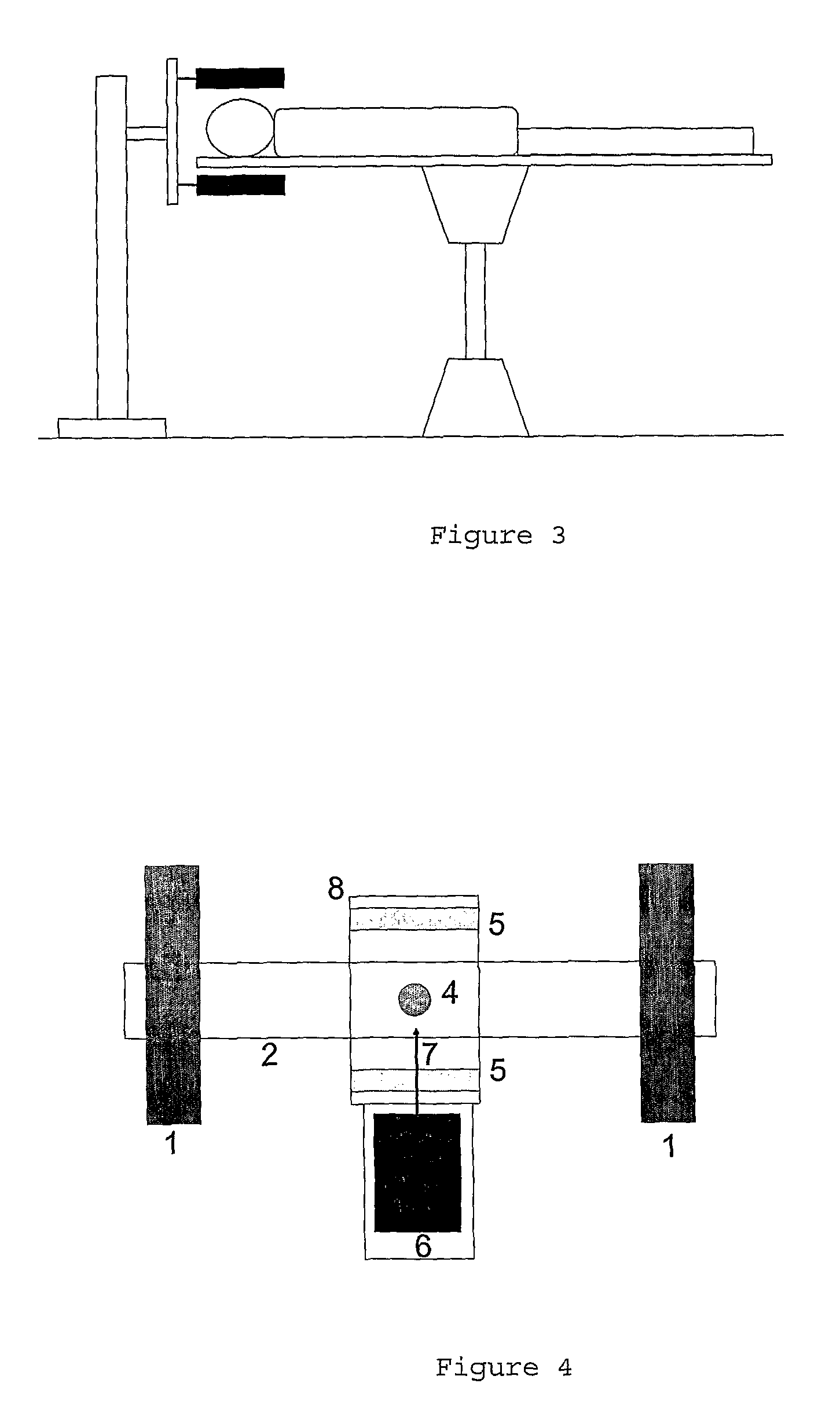Tomography by emission of positrons (PET) system
a positron emission and tomography technology, applied in the field of x-ray radiography and ultrasonography, can solve the problems of high cost for the society, unsatisfactory performance of conventional x-ray mammography, and not always easy to establish
- Summary
- Abstract
- Description
- Claims
- Application Information
AI Technical Summary
Benefits of technology
Problems solved by technology
Method used
Image
Examples
Embodiment Construction
[0084]This chapter describes a complete PET imaging system dedicated to exams of body parts such as the breast, axilla, head, neck, liver, heart, lungs, prostate region, and other extremities. The imaging system may also be used to make PET exams of small animals. One of the main characteristics of the present system is how different innovative aspects are combined and articulated to provide improved PET imaging performance in relation to previous systems or proposals.
[0085]5.1 The Partial-Body PET System
Device Configuration
[0086]The partial-body PET system has the following geometrical configuration:[0087]a) The PET detector is formed by two or more detecting plates (detector heads) with dimensions that are optimized for the breast, axilla region, brain and prostate region.[0088]b) The plates are able to rotate around the PET axis, under computer control, allowing taking data in several orientations as needed for tomographic image reconstruction.[0089]c) The PET detector system can...
PUM
 Login to View More
Login to View More Abstract
Description
Claims
Application Information
 Login to View More
Login to View More - R&D
- Intellectual Property
- Life Sciences
- Materials
- Tech Scout
- Unparalleled Data Quality
- Higher Quality Content
- 60% Fewer Hallucinations
Browse by: Latest US Patents, China's latest patents, Technical Efficacy Thesaurus, Application Domain, Technology Topic, Popular Technical Reports.
© 2025 PatSnap. All rights reserved.Legal|Privacy policy|Modern Slavery Act Transparency Statement|Sitemap|About US| Contact US: help@patsnap.com



